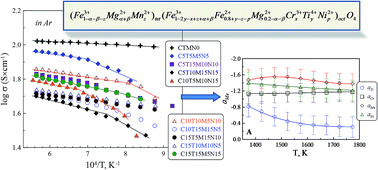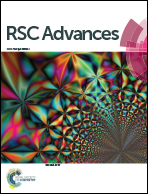Guidelines to design multicomponent ferrospinels for high-temperature applications
Abstract
This work explores the possibilities to design magnetite-based spinels through multiple simultaneous co-substitutions with transition metal cations, with emphasis on redox behavior and electronic transport. For the first time this approach was assessed for high-temperature applications, which is of particular interest for the development of consumable anodes for pyroelectrolysis, an alternative carbon-lean steelmaking process. A Taguchi plan was used to assess the impact of the concentration of substituting chromium, titanium, manganese and nickel cations on the lattice parameter and electrical conductivity of the multicomponent ferrospinels. The results revealed a comparable decrease in the electrical conductivity, provided by Cr3+, Mn3+/2+ and Ni2+ cations. The impact of Ti4+ was found to be less negative, contributed by the formation of Fe2+ cations and increased hopping probability. The strongest structural impacts, exerted by manganese cations, are likely to affect the mobility of polarons, as revealed by the analysis of the correlation factors for combined effects. Ferrospinels, containing various transition metal cations, are more susceptible to oxidation and phase decomposition, which often result in a sudden conductivity drop and significant dimensional changes in the ceramics. The observed trends for redox behavior suggest that the potential applications of multicomponent ferrospinels in oxidizing conditions are limited to 1000–1400 K due to insufficient stability, while higher temperature applications, requiring significant electronic conductivity, are rather suitable.



 Please wait while we load your content...
Please wait while we load your content...